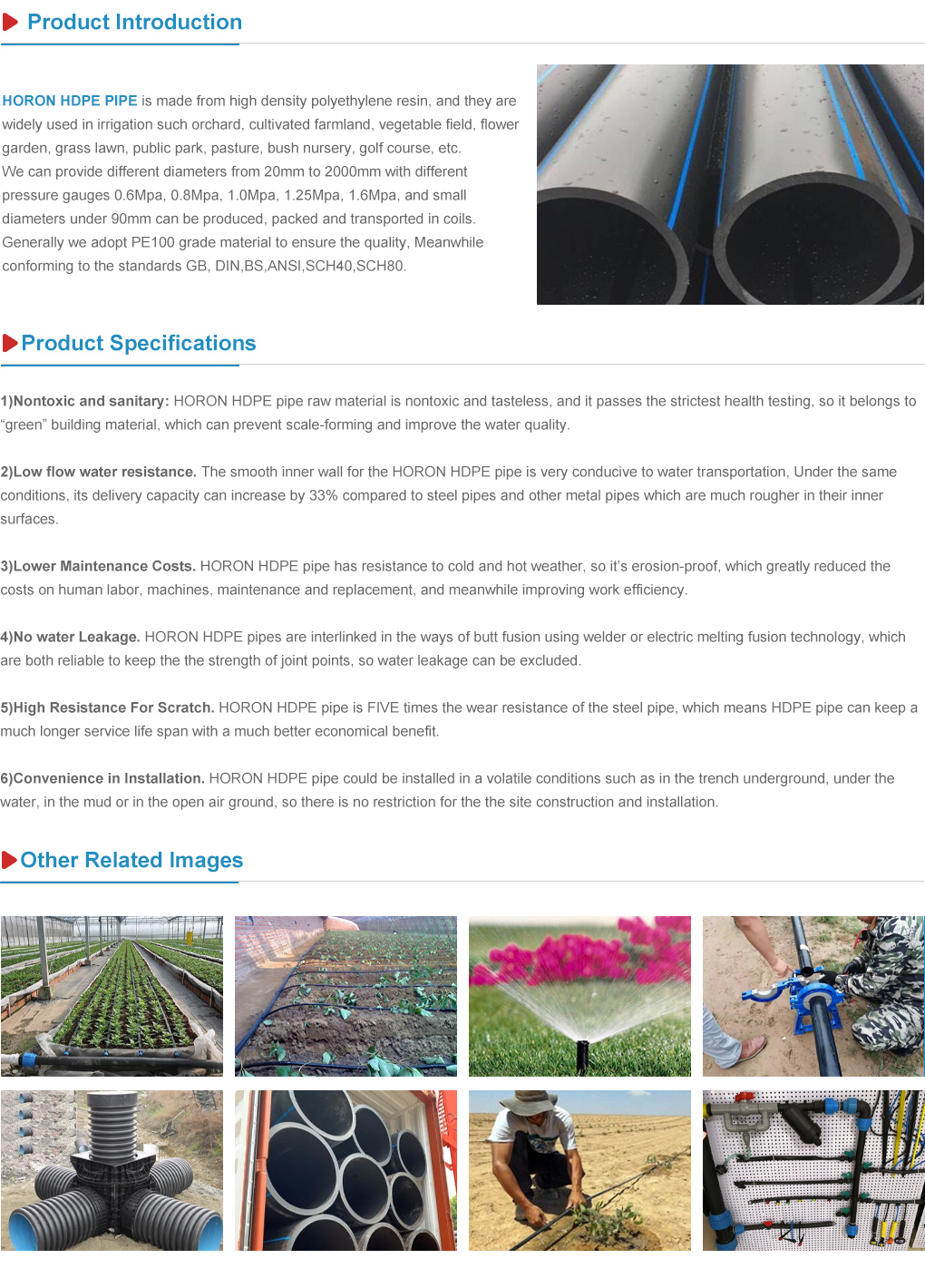Nov . 13, 2024 12:10 Back to list
pvc to hdpe connection products
Connecting PVC to HDPE Understanding Connection Products and Techniques
When it comes to plumbing, irrigation, and a variety of industrial applications, the need to connect different types of pipes is a common scenario. Among the most frequently used materials are Polyvinyl Chloride (PVC) and High-Density Polyethylene (HDPE). Each has unique properties that make it suitable for specific applications, but sometimes projects require the seamless connection of these two versatile materials. This article delves into the connection products and techniques available for linking PVC to HDPE, highlighting their advantages and considerations.
Characteristics of PVC and HDPE
Before exploring connection options, it's essential to understand the characteristics that define PVC and HDPE. PVC is a rigid plastic that possesses excellent chemical resistance and durability, making it ideal for water supply systems, drainage, and construction applications. Conversely, HDPE is a flexible and tough plastic known for its high impact resistance, lightweight nature, and ability to withstand extreme temperatures. These properties make HDPE a preferred choice for applications like underground piping and gas distribution.
Connection Products for PVC to HDPE
To connect PVC and HDPE pipes, several specialized products can be utilized. Each product caters to the compatibility issues posed by the different thermal and mechanical properties of the two materials. Here are some of the most common connection products
1. Mechanical Fittings These are the most straightforward solutions for connecting PVC and HDPE. Mechanical fittings typically come in the form of couplings or flanges that provide a secure connection without the need for welding or adhesives. These fittings often have a rubber gasket that aids in creating a watertight seal.
2. Transition Fittings Transition fittings are specifically designed to connect pipes of different materials. They feature a unique design that allows for smooth transitions between pipe types while ensuring structural integrity. These can include threaded adapters that enable easy connection to existing plumbing systems.
3. Fusion Welding In certain applications, especially involving HDPE, fusion welding can be an effective connection method. This process involves heating the ends of the pipes and then bringing them together to form a solid joint. While this method may not be directly applicable for joining PVC to HDPE, it can be useful when using an intermediate HDPE fitting to connect to PVC.
pvc to hdpe connection products

4. Adhesive Solutions In some cases, specially formulated adhesives that work with both PVC and HDPE can be applied, although this is less common. It's essential to ensure that the adhesive is compatible with both materials and suitable for the specific application.
5. Compression Fittings These are typically used in situations where a quick connection is required. Compression fittings can accommodate both PVC and HDPE and are particularly useful for irrigation systems or temporary setups. They allow for easy assembly and disassembly, making them versatile for many applications.
Considerations for Connecting PVC to HDPE
While connecting PVC and HDPE may seem straightforward, there are a few considerations to keep in mind
- Size Compatibility Ensure that both PVC and HDPE pipes have compatible diameters to avoid flow restrictions. - Pressure Ratings Check the pressure ratings of both materials and ensure the connection product can handle the expected pressures in the system.
- Temperature Tolerance Be aware of the temperature limits of both materials, as this can significantly affect their performance and longevity.
- Installation Techniques Proper installation is critical for a reliable connection. Follow the manufacturer’s guidelines for the connection products and take care to avoid contamination during the installation process.
Conclusion
Connecting PVC to HDPE requires careful consideration of the right products and techniques to ensure a secure, reliable, and leak-free joint. Mechanical fittings, transition fittings, fusion welding, adhesive solutions, and compression fittings stand out as effective options for this task. By understanding the properties of PVC and HDPE and selecting the appropriate connection methods, professionals can ensure the longevity and reliability of their piping systems. Proper execution will lead to successful projects, whether in residential plumbing, agricultural irrigation, or industrial applications.
-
High-Quality PVC Borehole Pipes Durable & Versatile Pipe Solutions
NewsJul.08,2025
-
High-Quality PVC Perforated Pipes for Efficient Drainage Leading Manufacturers & Factories
NewsJul.08,2025
-
High-Quality PVC Borehole Pipes Durable Pipe Solutions by Leading Manufacturer
NewsJul.08,2025
-
High-Quality PVC Borehole Pipes Reliable PVC Pipe Manufacturer Solutions
NewsJul.07,2025
-
High-Quality UPVC Drain Pipes Durable HDPE & Drain Pipe Solutions
NewsJul.07,2025
-
High-Quality Conduit Pipes & HDPE Conduit Fittings Manufacturer Reliable Factory Supply
NewsJul.06,2025

